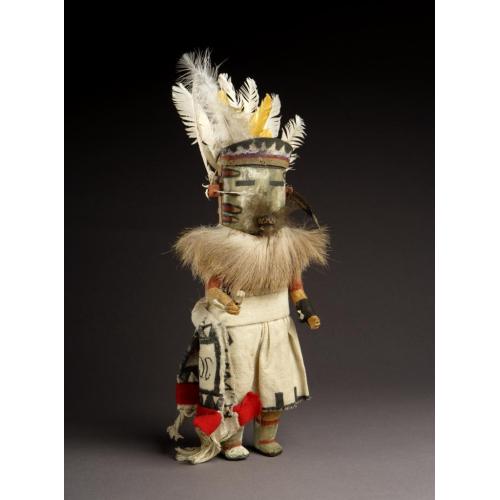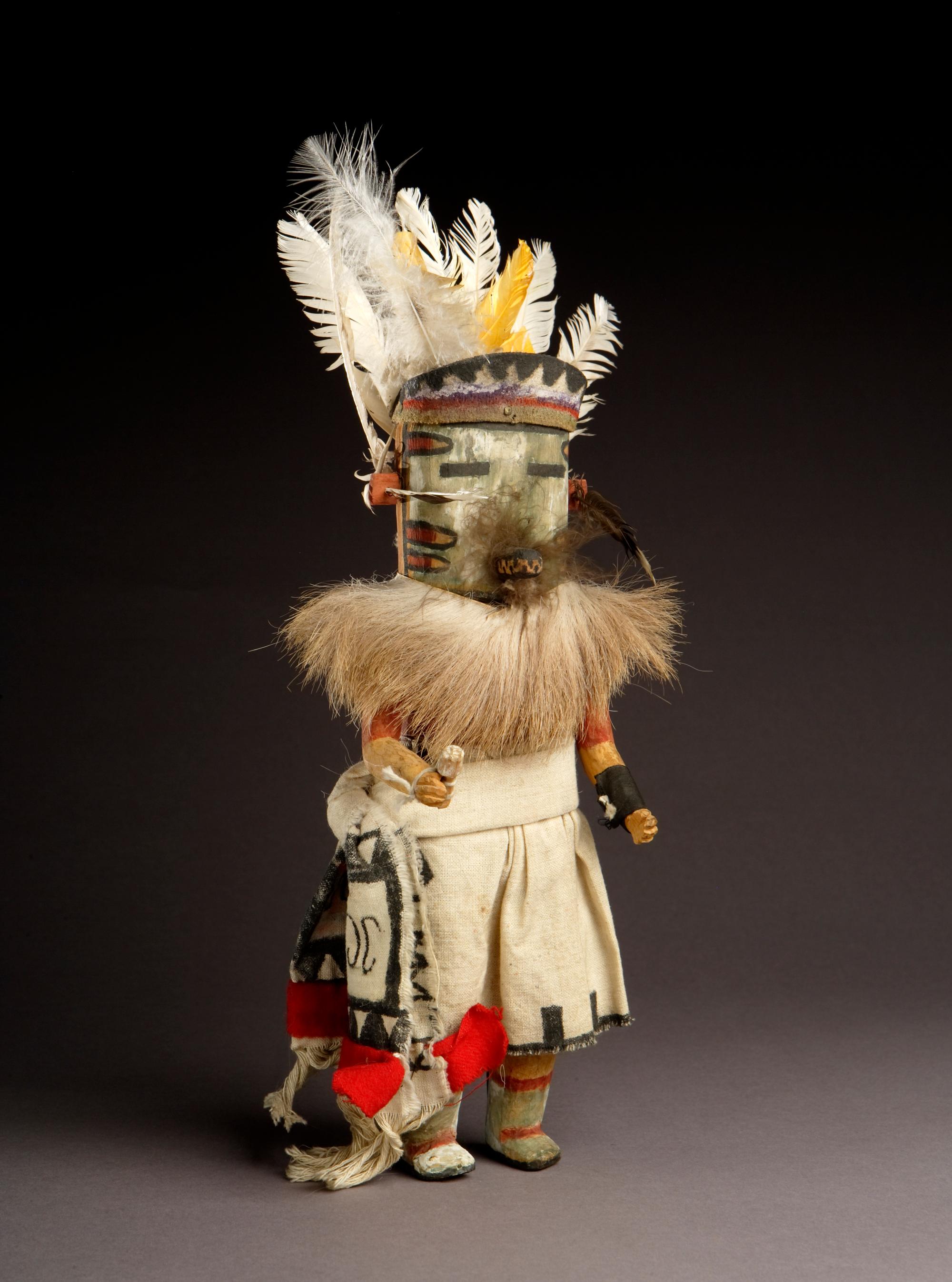
Photograph by Addison Doty. Copyright 2009 School for Advanced Research.
Wodem Thla kokko we'ha | Mixed Group kokko figure
Artist or Maker: Unknown
Dimensions:
Overall: 36.9 cm (14 1/2 in.)
Medium: wood | paints | feathers | cotton | fur | leather | metal, iron
Credit Line: Gift of Mary V. Conkey, 1929.
Place Made:
Zuni Pueblo, McKinley County, New Mexico, Southwest, United States, North America
Object Number: IAF.C92
Not on view
Tribal Collection Review RemarksJim Enote and Octavius Seowtewa during collection review visit April 6 and 7, 2009 (Events Record “Collection Review: Zuni Tribe, Review 1”): This kokko is part of the Mixed Group Dancers. There are several versions of the Wodem Thla dancers, including this one. Another version of this kokko is IAF.C5.
ADDITIONAL INFORMATION: Jim Enote and Octavius Seowtewa during collection review visit April 10 and 11, 2014 (Events Record “Collection Review: Zuni Tribe, Review 13”): This kokko figure is carved wood, probably pine. Its face is painted blue. The paints used on the piece appear to be mostly commercial, perhaps poster paints. The eyes are painted black. There are red, yellow, and black decorations on the sides of the face. The mouth beak is painted black with black teeth and a yellow mouth opening. There are brown turkey fluffs adhered around the back of the mouth beak. There is a strip of leather, similar to the shape of a crown, pinned to the top of the face with small finishing nails. It’s painted with yellow, red, white, and black cloud designs. The top of the head is covered in white cotton batting. There are four feathers dyed yellow on top of the head. There are two upward-pointing white feathers that are nailed to the back of the head. A fan of six white chicken feathers, with a strip of leather woven between them to hold them in the fan shape, is tied to and hangs down from the two feathers that are nailed to the head. Two black dragonflies are painted on the back of the head. The ears are red, square-shaped taps with a dove feather inserted in a hole that is drilled in each ear. The figure wears a ruff made from a strip of deer fur.
The figure’s torso and upper arms are painted red. The arms are articulated at the shoulders and attached to the body with a nail through each shoulder. The forearms and hands are painted yellow. The right hand holds a wooden rattle painted white, tied onto the hand with white cotton string. The left forearm has a piece of black fabric wrapped around it.
The figure wears a kilt made of white cotton muslin, with black and red painted patterns meant to indicate embroidery. Tied over top of the kilt is a white cotton muslin sash, painted with red and black designs to resemble the embroidery on a brocade sash. The ends of the sash are edged with a strip of red felt.
The figure’s legs are painted yellow. Its moccasins on are painted to look like the ceremonial red, yellow, and blue type of moccasins.
There are several pieces missing from the kokko’s outfit as compared to what the dancer would wear. It should be wearing a bobcat skin cape instead of a ruff of deer fur. It’s missing a turquoise necklace, worn in front. It should wear a bracelet and a piece of black yarn on its right arm. The left hand should hold a bow and two or three arrows. It’s missing the fox pelt that would be tied over the back of its kilt. It should have a turtle shell rattle worn on the back of its right leg, just below the knee. It should also have a black yarn tied on its left leg, just below the knee.
In Collection(s)
The Indian Arts Research Center, in collaboration with Native American community scholars, strives to present accurate collections records. Records may be updated as new information becomes available and is reviewed with the Native American community having cultural affinity to particular items. Please write to iarc@sarsf.org if you have questions or concerns related to the documentation.
